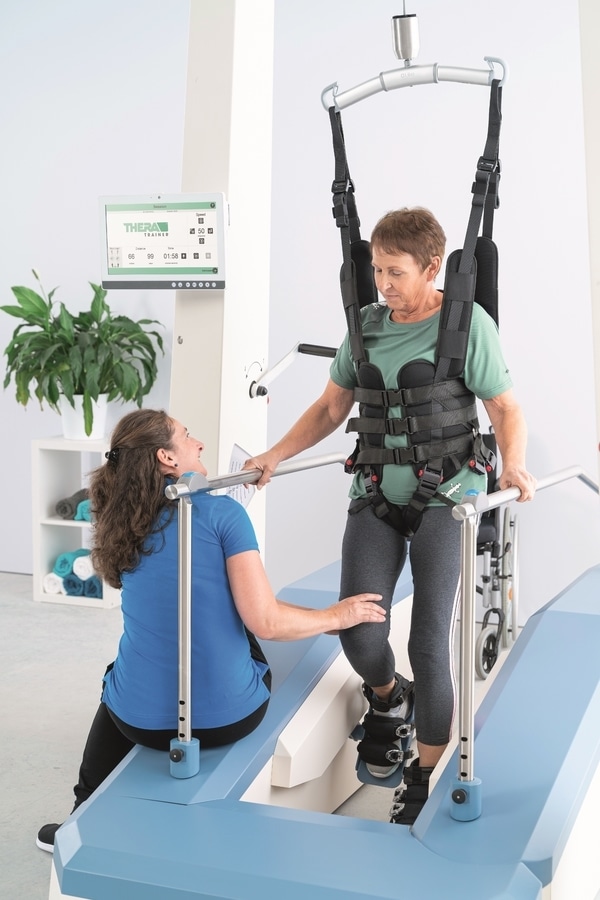
#Product Trends
Updates on robotics-based vs. conventional gait training
A multicenter controlled clinical comparative study to examine the effectiveness of the interventions.
Although stroke survivors may benefit from robotic gait rehabilitation, inpatient robotic gait training needs further investigation. In this work, researchers evaluated the effectiveness of this approach (using an exoskeleton or an end-effector robot) compared to conventional gait training in subacute stroke survivors.
In a multicenter, controlled clinical study, 89 patients in the subacute stage after a stroke completed twenty sessions of robotic (robot group) or conventional gait training (control group) in addition to daily standard therapy. Robotic training was performed using an exoskeleton (RobotEXO group) or an end effector (RobotEND group). Clinical outcomes were evaluated before and after treatment. Walking speed during the 10-meter walk test (10 MWT) was the primary outcome of this study, and secondary outcomes were the 6-minute walk test (6 MWT), the Timed Up and Go Test (TUG), and the Modified Barthel Index (mBI).
The characteristics examined in the robot and control groups did not differ at baseline. At the end of the study period, a significant advantage was found in the robotic group in the 10 MWT. A benefit was also observed in the following parameters: 6 MWT, TUG and mBI. In addition, the patients in the robotic group outperformed those in the control group in terms of walking speed, endurance, balance, and ADL. Patients in the RobotEND group improved their walking speed more than those in the RobotEXO group. The researchers conclude that stationary robot-assisted training improves walking ability in subacute stroke survivors more than conventional training. These results suggest that people with subacute stroke may benefit from robotic training to improve walking speed and endurance. The results also suggest that end-effector robots are superior to exoskeleton robots in improving gait speed.
The results suggest that end effector robots are superior to exoskeleton robots in improving gait speed.
A well-designed new study from January 2023 supports previous results from other reviews. The appropriately high number of cases underlines the quality and informative value. In particular, the study highlights that end-effector robots appear to show more promise than exoskeletons in improving walking speed. Although it cannot be ruled out that the results are biased by different disease stages and degrees of functional impairment, it should be noted that people with subacute stroke who are unable to move independently benefit significantly from stationary robotic gait training. More large, controlled studies are needed to compare results between the two device types in more homogeneous populations and to determine the optimal protocol design for maximum efficacy. The conditions that affect efficacy still need to be better understood.
SOURCES
Pournajaf S, Calabrò RS, Naro A, Goffredo M, Aprile I, Tamburella F, Filoni S, Waldner A, Mazzoleni S, Focacci A, Ferraro F, Bonaiuti D, Franceschini M, TreadStroke Group. Robotic versus Conventional Overground Gait Training in Subacute Stroke Survivors: A Multicenter Controlled Clinical Trial. J Clin Med. 2023 Jan 5;12(2):439. doi: 10.3390/jcm12020439. PMID: 36675371; PMCID: PMC9861649.





